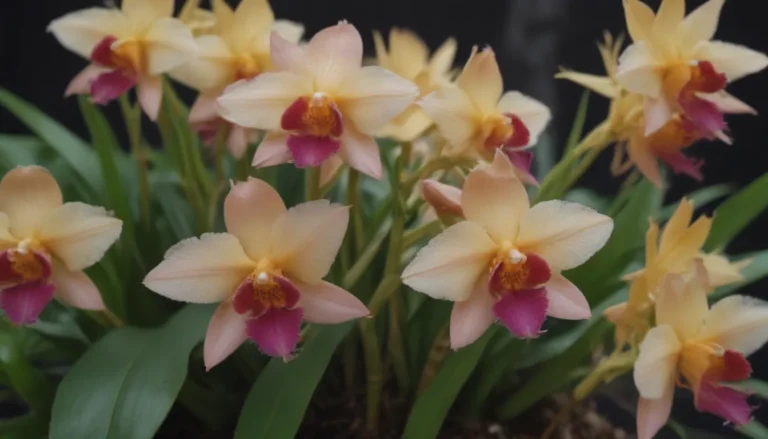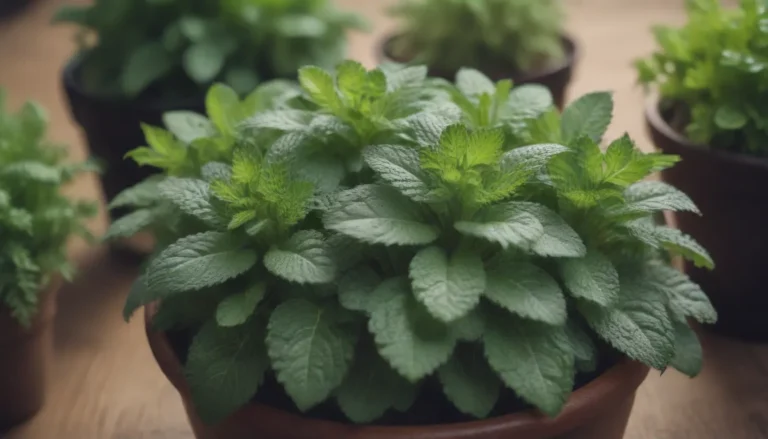Everything You Need to Know About Growing and Caring for Chinese Holly

Chinese holly (Ilex cornuta) is not just a plant; it’s a versatile evergreen shrub that can serve as a lush large shrub, a privacy hedge, or even a small trimmed tree. With small, yellowish-green flowers that attract the first bees of the season, Chinese holly is a popular choice for many gardeners. In this comprehensive guide, we will explore all aspects of growing and caring for Chinese holly plants to help you create a thriving garden filled with these beautiful plants.
The Beauty of Chinese Holly
Chinese holly is known for its unique characteristics that set it apart from other plants. Here are some key points to know about Chinese holly:
- Small, yellowish-green flowers with four tiny petals attract bees
- Dioecious plants, meaning they have either male or female flowers, requiring both for fruit production
- Berries range from dark orange or red to softer colored yellow, about 1/4 to 1/2 inch in diameter
- Unusual rectangular leaves resemble bull horns, dark olive glossy green, and spiny
- Toxic to humans and pets
Planting Tips for Chinese Holly
Establishing a Chinese holly plant requires some careful planning and attention to detail. Here are some steps to follow for successful planting:
- Plant in cool weather for the best results
- Dig a hole two to three times as wide as the rootball, but only as deep
- Consider the mature size of the plant, as Chinese holly can grow anywhere from eight to 15 feet wide
- Ensure the plant is positioned where it has room to grow, as mature plants do not transplant well
- Water young plants frequently until established, as they require additional moisture
It’s important to note that Chinese holly can be invasive in certain regions, so always check with your local extension agent before planting to ensure it’s suitable for your area.
Caring for Chinese Holly
After planting your Chinese holly, proper care is essential for its health and growth. Here are some tips for caring for your Chinese holly plant:
Light
Choose a sunny spot for your Chinese holly plant, as it thrives in full to partial sun. At least five hours of direct sunlight is recommended for optimum berry production and foliage density.
Soil
Chinese holly prefers moist, well-drained soil and can grow in clay, sand, or loam as long as the soil has excellent drainage. Adding organic matter or compost can improve soil quality for better root growth.
Water
After planting, give your Chinese holly a good soak and top the soil with mulch to retain moisture. Water young plants more frequently until established, but mature plants are drought-resistant.
Temperature and Humidity
Chinese holly thrives in USDA zones 7 to 9 and tolerates a wide range of temperatures and humidity levels. In colder climates, protect the plant during winter to ensure it stays healthy.
Fertilizer
Feed your Chinese holly with a slow-release shrub and tree fertilizer in late winter or early spring for constant greening. If leaves yellow in summer, a second fertilization might be needed.
Types of Chinese Holly
There are several cultivars of Chinese holly to choose from, each with its unique characteristics. Popular cultivars include ‘Burford’, ‘Berries Jubilee’, and ‘Carissa’.
Pruning and Propagating Chinese Holly
To maintain a neat privacy hedge, prune your Chinese holly in late winter with sharp pruning shears. Remove dead or damaged branches as needed. Propagate Chinese holly from semi-hardwood cuttings for new plants.
Growing Chinese holly from seed is possible but time-consuming, so it’s not recommended unless you have the patience to wait up to three years for germination.
Potting and Overwintering
When planting Chinese holly in a pot, use moist, well-drained soil and a large container that allows room for growth. Overwinter holly by applying mulch over the roots to protect them from freezing temperatures.
Common Pests and Plant Diseases
Holly plants may be troubled by leaf miners, scale, whiteflies, and spider mites. Treat these pests with appropriate methods to keep your plants healthy. Additionally, watch out for powdery mildew, leaf spot, leaf rot, and tar spot.
Conclusion
In conclusion, Chinese holly is a beautiful and versatile plant that can enhance any garden with its unique characteristics and vibrant foliage. By following the tips and guidelines provided in this comprehensive guide, you can successfully grow and care for Chinese holly plants in your own garden. Remember to check with your local extension agent for specific recommendations for your area and enjoy watching your Chinese holly thrive and flourish in your outdoor space.





